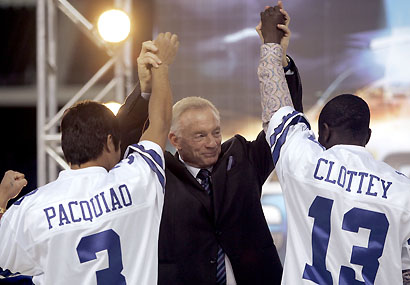Watching two upper-tier fighters/contenders spar while preparing for an upcoming fight is the highlight of any activity in a boxing gym. Sparring was my favorite part of training back in the day. So much so, that on the days I didn't spar I felt as though my workout was incomplete and was one day further away from getting to where I wanted to be. There's only one way for a fighter to improve and that is for him to spar and fight.
The most intense sparring I've ever witnessed was between former light heavyweight and cruiserweight champ, Dwight Muhammad Qawi, and former light heavyweight contender Jerry "The Bull" Martin in the early eighties. The closet parallel I can make to describe the rounds they logged is to suggest imagining Israel Vazquez and Rafael Marquez weighing 185 pounds wearing training gloves and head gear while going at it five or six rounds a day. I would've paid to see them spar each other every day of the week if that's what it took just to have the pleasure of watching them work together.
When it comes to sparring, I've never read nor have I had it conveyed to me by any fighters or trainers stories like the ones that surface about Manny Pacquiao's sparring. Has anyone reading this ever heard of Pacquiao getting his butt kicked in the gym even once? Or heard of someone who has even held their own with him? If it's happened during the last four or five years, it seldom has surfaced. Yet there's a flood of reports pertaining to his sparring on a daily basis after almost every workout. And that's nowhere near the case pertaining to Paul Williams, Floyd Mayweather, Edwin Valero, Chad Dawson or either of the Klitschko brothers when they train and spar in preparation for a big fight.
Pacquiao's legendary sparring further illustrates just how much he truly loves to fight. It's rather apparent that Manny brings the same kind of passion and joy to his sparring sessions that he seems to bring to every aspect of boxing -- and he genuinely seems to be a man who loves what he's doing for a living.
Earlier this week Pacquiao said, “I am ready to rumble (referencing to his March 13th bout with Joshua Clottey). I can’t wait to get into the ring. I am feeling very good and I am excited to put on a memorable show for the boxing fans. I want to make them happy again.”
Pacquiao reiterating that he wants to put on a good fight for the fans no doubt endears him to them a lot, and I believe that he means it to a point. But more than that Pacquiao projects from his deeds in the ring that he really loves ring combat and can't wait to glove up on fight night, in much the same way Roberto Duran and "Smokin" Joe Frazier did. I'm sure there may be a few reading this and saying to themselves that I forgot about Mike Tyson... and they'd be wrong.
Tyson had a presence about him that projected he couldn't wait for the bell to start the fight, and when he was having his way with his opponent he looked as if he loved being inside the ring. However, when Mike was met with resistance like he was when he fought Buster Douglas, Evander Holyfield and Lennox Lewis, he wasn't nearly as willing and stopped letting his hands go and began thinking about possibly losing leading to him being more measured offensively.
That's the polar opposite of Duran and Frazier who actually got stronger and became more confident and willing as the fight got tougher and intensified. And Pacquiao is cut from the same cloth as they were and relishes the joy of physical combat. In his previous two fights against Ricky Hatton and Miguel Cotto, both tried to bring it to him only to realize they were confronted by what must've seemed like a school of piranha who raised them one.
Hatton tried to jump on him early hoping to assert himself physically, and was met by a buzzsaw who made him pay for his deed. Cotto, after seeing what happened to Hatton, tried to go about it a little more measured. When Miguel felt Pacquiao was stepping back to reset, he tried to impose himself physically and not only did Manny oblige him to do so, he let him have a few free shots at his body and literally fed off of Cotto not doing any real damage when he landed with his Sunday left-hook in succession.
For his WBO title defense against Clottey, it's been reported in several Philippine newspapers that Pacquiao has worked with Jamie Kavanagh, Mike Dallas, Dave Rodela, Ray Beltran, Shawn Porter, Jose Benavidez, Abdullay Amidu and Steve Forbes as his spar-mates. Forget what their records are, they're all in good shape physically and present him with something unique. Some are small and quick, others are a little bigger and more physical and present varying styles. And the reports coming out of Pacquiao's training camp all indicate that he's had his way with every one of them. And it seems as the fights gets closer Pacquiao is looking better every time out and is once again peaking at the right time. Which confirms that team Pacquiao knows exactly how to get the most out of it's sparring work as they ready Manny for his upcoming bouts.
Maybe because we're in the midst of a media explosion and almost everything is on YouTube, at least for a little while before it's taken down, Pacquiao's sparring as he prepares for his major bouts have drawn a lot of attention, more so than any fighter in recent memory.
David Mikael Taclino
Inyu Web Development and Design
Creative Writer
























